Allergy symptoms in babies. Food Allergies in Babies and Toddlers: Symptoms, Causes, and Management
What are the most common food allergies in babies and toddlers. How can parents identify allergy symptoms in their children. What are the best ways to introduce potentially allergenic foods to infants. How are food allergies in young children diagnosed and treated.
Common Food Allergies in Babies and Toddlers
Food allergies affect approximately 6 million children in the United States, with a higher prevalence among boys compared to girls. While a child can potentially be allergic to any food, certain allergens are more common in infants and toddlers:
- Peanuts (the most common trigger)
- Cow’s milk
- Eggs
- Fish
- Tree nuts (e.g., almonds, cashews, walnuts)
- Shellfish (e.g., crab, lobster, shrimp)
- Soy
- Wheat
It’s important to note that some children may react to multiple food allergens. Understanding these common triggers can help parents be more vigilant when introducing new foods to their babies and toddlers.
Recognizing Allergy Symptoms in Infants and Young Children
Identifying allergy symptoms in babies and toddlers can be challenging, as they may not be able to communicate their discomfort clearly. Parents should be aware of the following signs that could indicate a food allergy:
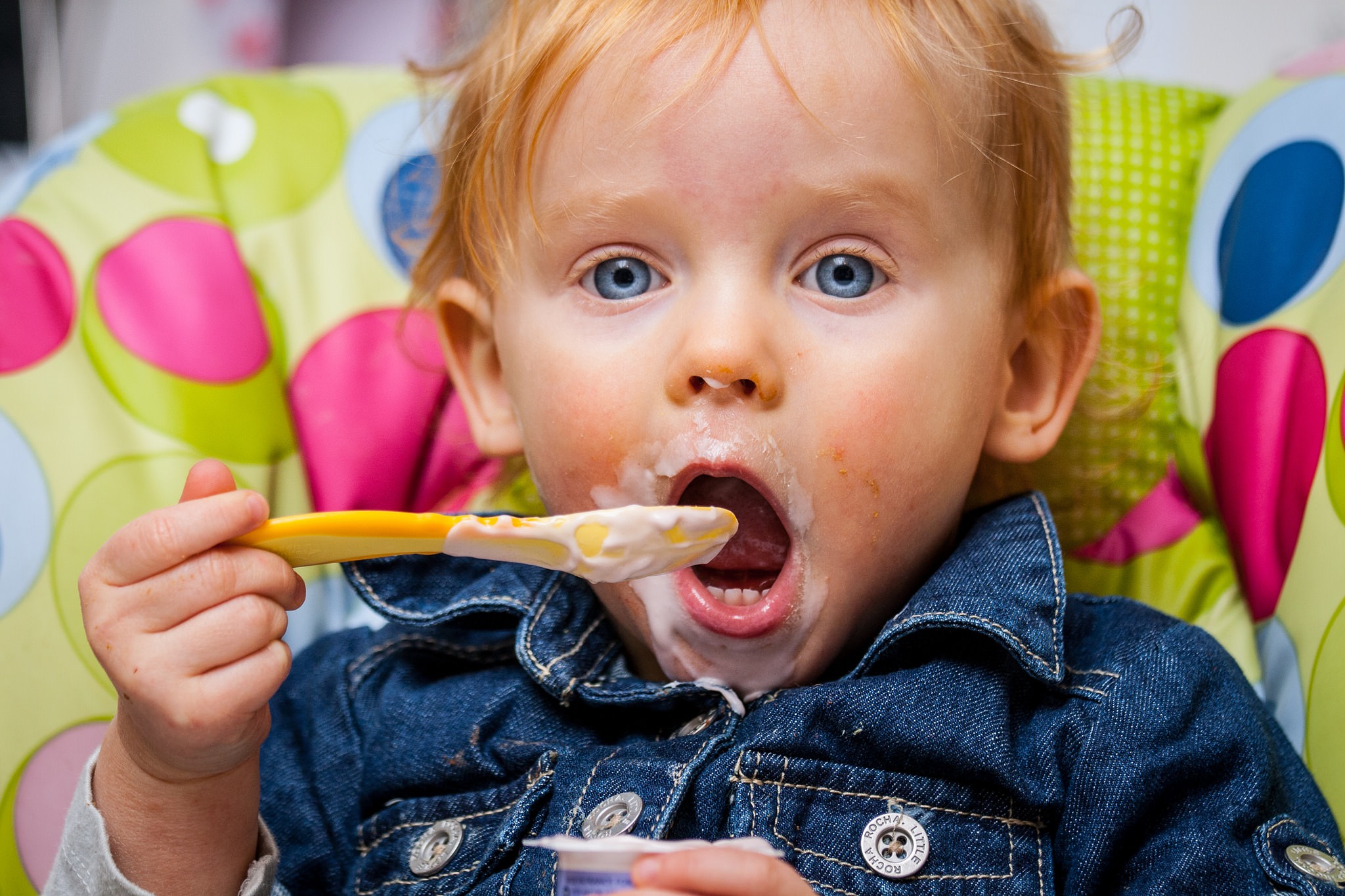
- Skin reactions: Hives, rashes, or eczema flare-ups
- Gastrointestinal issues: Abdominal pain, nausea, vomiting, or diarrhea
- Respiratory symptoms: Coughing, wheezing, or difficulty breathing
- Swelling: Particularly around the mouth, lips, or face
- Behavioral changes: Irritability, excessive crying, or lethargy
- Anaphylaxis: A severe, potentially life-threatening reaction requiring immediate medical attention
Are some allergy symptoms more serious than others? Yes, while most allergic reactions are mild, parents should be particularly vigilant for signs of anaphylaxis, which can include difficulty breathing, dizziness, and loss of consciousness. This severe reaction requires immediate medical intervention.
Safe Introduction of Potentially Allergenic Foods
Current medical guidelines recommend introducing potentially allergenic foods to babies around 6 months of age, alongside other solid foods. This approach may help reduce the risk of developing food allergies. Here are some tips for safely introducing these foods:
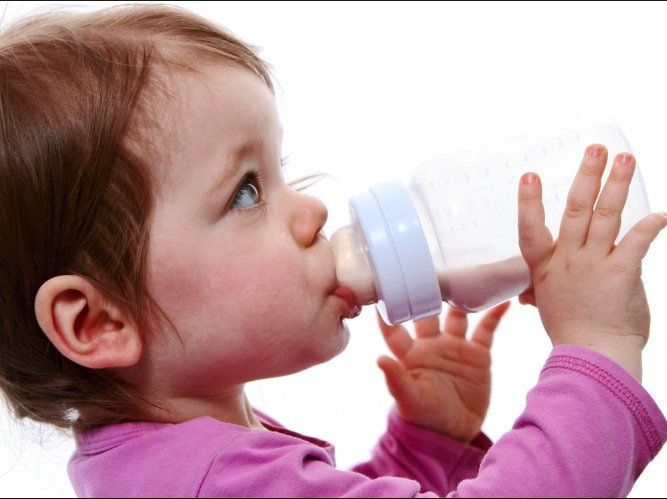
- Start with small amounts: Offer a tiny portion of the allergenic food and observe your baby for any reactions.
- Introduce one food at a time: Wait a few days before introducing another new food to easily identify any potential allergens.
- Be prepared: Have an antihistamine on hand, as recommended by your pediatrician, in case of a mild allergic reaction.
- Choose the right time: Introduce new foods when your baby is healthy and when you can monitor them closely for at least 2 hours afterward.
- Consider your family history: If there’s a strong history of food allergies in your family, consult with your pediatrician before introducing highly allergenic foods.
Should parents delay the introduction of allergenic foods? No, current evidence suggests that delaying the introduction of potentially allergenic foods beyond 6 to 12 months may actually increase the risk of developing allergies to these foods.
Breastfeeding and Formula Feeding Considerations for Allergies
Breastfeeding and formula choices can play a role in managing and preventing allergies in infants. Here are some key points to consider:
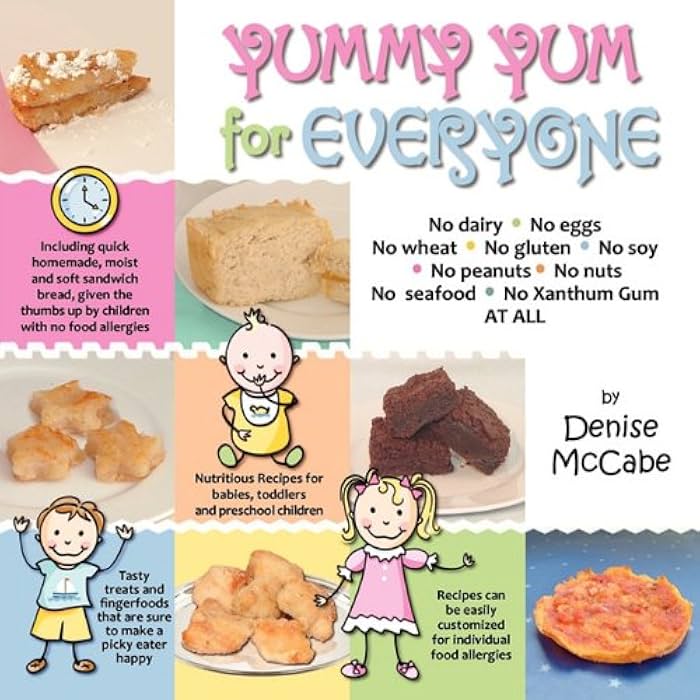
- Exclusive breastfeeding or use of first infant formula is recommended for approximately the first 6 months of life.
- Mothers who are pregnant or breastfeeding do not need to avoid potential allergens in their diet unless they themselves are allergic to those foods.
- For babies with diagnosed cow’s milk allergy who are not breastfed, parents should consult their healthcare provider about suitable formula options.
- Some studies suggest that breastfeeding may help reduce the risk of allergies, though more research is needed to confirm this benefit.
Can breastfeeding mothers eat allergenic foods? Yes, unless the mother herself has a diagnosed allergy, consuming allergenic foods while breastfeeding is generally considered safe and may even help reduce the risk of allergies in the infant.
Specialized Formulas for Allergic Infants
For babies with diagnosed cow’s milk allergy who are not breastfed, several specialized formula options are available:
- Extensively hydrolyzed formulas: These contain cow’s milk proteins that have been broken down into smaller particles, making them less likely to trigger an allergic response.
- Amino acid-based formulas: These contain individual amino acids rather than intact proteins, making them suitable for infants with severe allergies or multiple food allergies.
- Soy-based formulas: While some infants with cow’s milk allergy may tolerate soy formulas, there’s a risk of cross-reactivity, so these are not typically the first choice for allergic infants.
Diagnosing Food Allergies in Babies and Toddlers
Accurately diagnosing food allergies in young children is crucial for proper management and prevention of unnecessary dietary restrictions. The diagnostic process typically involves:
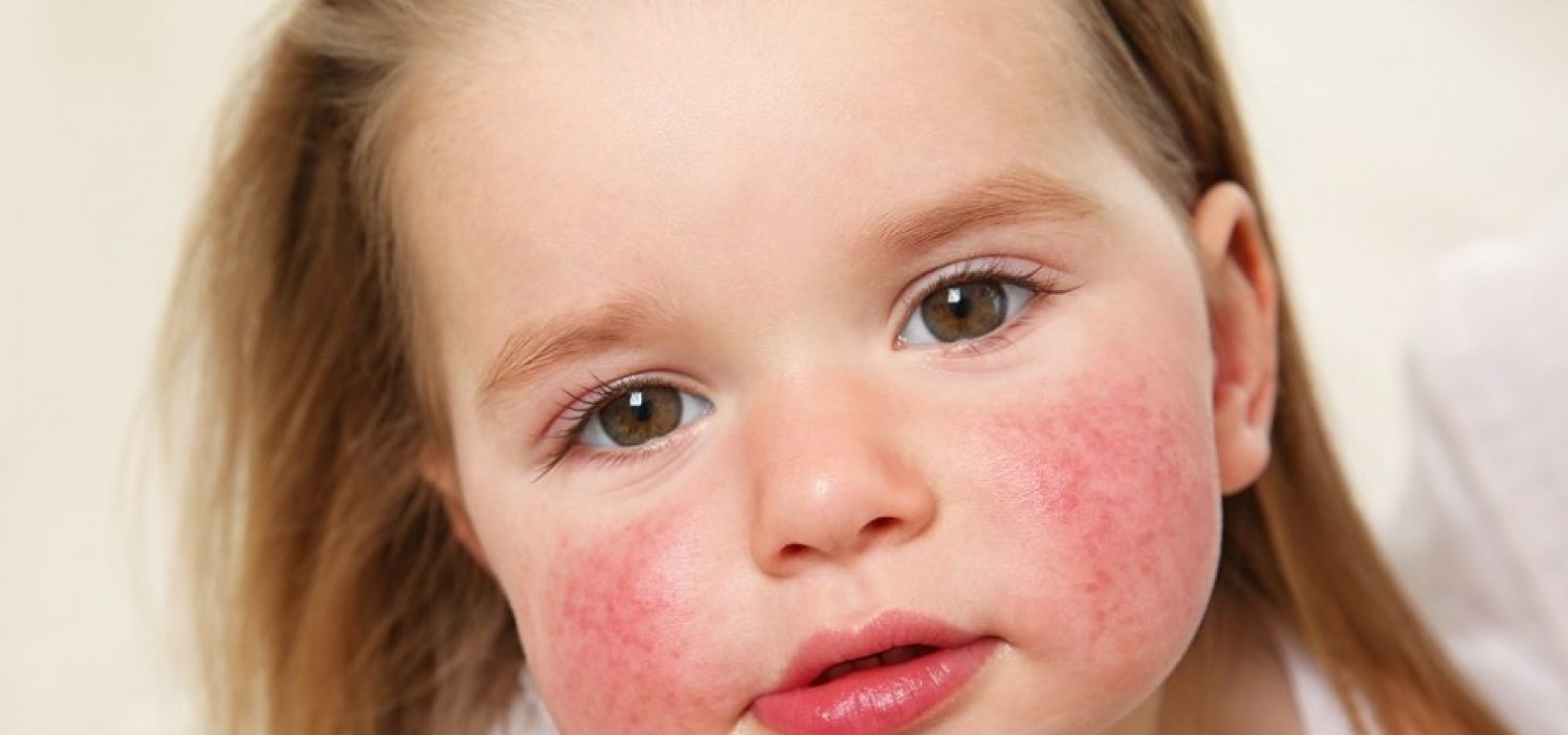
- Medical history: A detailed discussion of symptoms, timing of reactions, and family history of allergies.
- Physical examination: To check for signs of allergic reactions or related conditions like eczema.
- Skin prick tests: Small amounts of potential allergens are placed on the skin to observe for reactions.
- Blood tests: Specific IgE tests can measure antibodies to specific foods in the blood.
- Oral food challenges: Under medical supervision, small amounts of suspected allergens are given to the child to observe for reactions.
- Elimination diets: Suspected allergens are removed from the diet and then reintroduced to observe for changes in symptoms.
Is it possible for babies to outgrow food allergies? Yes, many children outgrow allergies to milk and eggs, but allergies to peanuts, tree nuts, fish, and shellfish are often lifelong. Regular follow-up with an allergist can help monitor for changes in allergy status.
Treatment and Management of Food Allergies in Young Children
While there is no cure for food allergies, proper management can help prevent reactions and ensure a child’s safety. Treatment strategies include:

- Strict avoidance of allergens: Carefully reading food labels and avoiding cross-contamination is crucial.
- Emergency action plans: Parents and caregivers should have a clear plan for managing accidental exposures, including the use of epinephrine auto-injectors if prescribed.
- Nutritional counseling: Working with a registered dietitian can help ensure a balanced diet despite food restrictions.
- Regular follow-ups: Periodic visits to an allergist can help monitor the child’s allergy status and adjust management plans as needed.
- Education: Teaching the child, family members, and caregivers about allergy management is essential for long-term safety.
Are there any treatments to cure food allergies in children? While there is ongoing research into potential cures, including oral immunotherapy, currently, the primary treatment for food allergies remains strict avoidance of the allergen and management of symptoms in case of accidental exposure.
Non-Food Allergies in Infants and Toddlers
While food allergies are common in young children, other types of allergies can also affect infants and toddlers. These include:
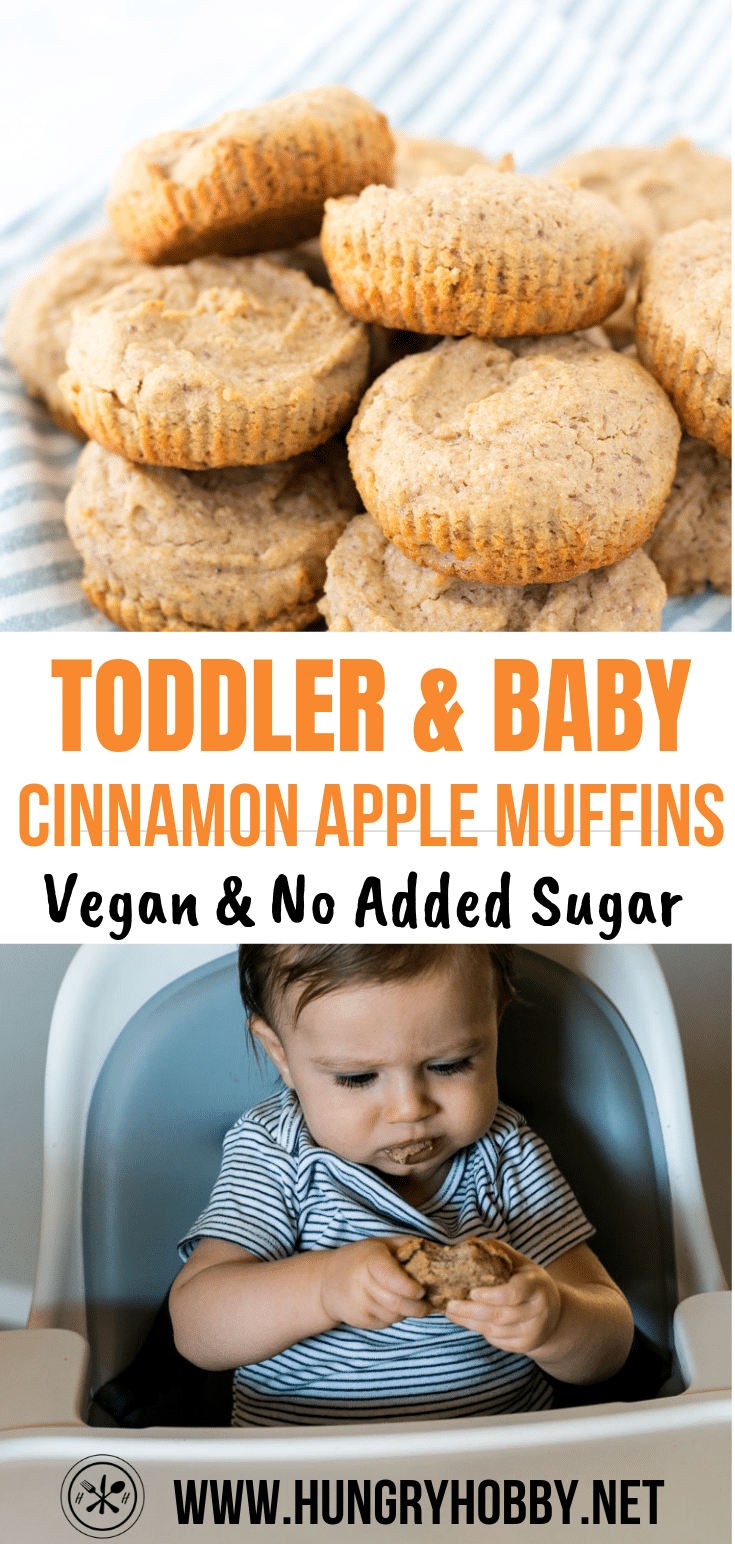
Seasonal Allergies
Although less common in very young children, seasonal allergies can develop as early as 1-2 years of age. Symptoms may include:
- Runny or stuffy nose
- Sneezing
- Itchy, watery eyes
- Coughing
Indoor Allergies
Common indoor allergens that can affect babies and toddlers include:
- Dust mites
- Mold spores
- Cockroach droppings
These allergens can trigger symptoms similar to seasonal allergies, as well as exacerbate conditions like asthma or eczema.
Pet Allergies
Allergies to pets, particularly cats and dogs, can develop in young children. Symptoms may include:
- Nasal congestion
- Itchy, watery eyes
- Wheezing or difficulty breathing
- Skin rashes or hives
Can babies develop allergies to pets they’ve been around since birth? Yes, while early exposure to pets may reduce the risk of allergies in some children, it’s still possible for a child to develop allergies to a pet they’ve lived with since birth.
The Role of Food Additives in Allergies and Sensitivities
While true allergies to food additives are rare, some children may experience sensitivities or intolerances to certain additives. Common additives that may cause reactions include:

- Sulfites (used as preservatives)
- Artificial food colors
- Monosodium glutamate (MSG)
- Aspartame (artificial sweetener)
Symptoms of additive sensitivities can vary but may include:
- Headaches
- Behavioral changes
- Skin reactions
- Gastrointestinal discomfort
Are food additives dangerous for children? While food additives undergo strict safety testing before approval, some children may be sensitive to certain additives. Parents concerned about additive sensitivities should consult with a healthcare provider for guidance on identifying and managing these reactions.
Preventing Allergies in Babies and Toddlers
While it’s not always possible to prevent allergies, certain strategies may help reduce the risk of allergy development in young children:
- Early introduction of allergenic foods: As mentioned earlier, introducing potentially allergenic foods around 6 months of age may help reduce the risk of developing allergies.
- Breastfeeding: Exclusive breastfeeding for the first 4-6 months may offer some protection against allergies, though more research is needed to confirm this benefit.
- Maintain a healthy diet during pregnancy and breastfeeding: A balanced, nutritious diet may help support the developing immune system of the fetus and infant.
- Avoid unnecessary antibiotic use: Overuse of antibiotics may disrupt the gut microbiome, which plays a role in immune system development.
- Consider probiotics: Some studies suggest that probiotic supplementation during pregnancy, breastfeeding, or early infancy may help reduce the risk of certain allergies, though more research is needed.
- Reduce exposure to environmental tobacco smoke: Smoking during pregnancy and exposure to secondhand smoke in infancy may increase the risk of allergies and asthma.
Can allergies be completely prevented in children? While these strategies may help reduce the risk of allergies, it’s important to note that allergies cannot be completely prevented, as genetic factors also play a significant role in their development.

Understanding food allergies and other allergic conditions in babies and toddlers is crucial for parents and caregivers. By being aware of common allergens, recognizing symptoms, and following current guidelines for allergy prevention and management, parents can help ensure the health and safety of their young children. Always consult with a healthcare provider for personalized advice and guidance on managing allergies in infants and toddlers.
Food allergies in babies and young children
Allergies and breastfeeding or formula feeding
Exclusive breastfeeding or first infant formula is recommended for around the first 6 months of life.
If your baby has a cows’ milk allergy and is not being breastfed, talk to your GP about what type of formula to give your baby.
If you’re pregnant or breastfeeding, you do not need to avoid foods that can trigger allergic reactions (including peanuts), unless you’re allergic to them.
Introducing foods that could trigger allergy
When you start introducing solid foods to your baby from around 6 months old, introduce the foods that can trigger allergic reactions one at a time and in very small amounts so that you can spot any reaction.
If your baby already has an allergy, such as a diagnosed food allergy or eczema, or if you have a family history of food allergies, eczema, asthma or hay fever, you may need to be particularly careful when introducing foods. Talk to your GP or health visitor first.
Talk to your GP or health visitor first.
Foods that can trigger an allergic reaction are:
- cows’ milk
- eggs (eggs without a red lion stamp should not be eaten raw or lightly cooked)
- foods that contain gluten, including wheat, barley and rye
- nuts and peanuts (serve them crushed or ground)
- seeds (serve them crushed or ground)
- soya
- shellfish (do not serve raw or lightly cooked)
- fish
These foods can be introduced from around 6 months as part of your baby’s diet, just like any other foods.
Once introduced and if tolerated, these foods should become part of your baby’s usual diet to minimise the risk of allergy.
Evidence has shown that delaying the introduction of peanut and hen’s eggs beyond 6 to 12 months may increase the risk of developing an allergy to these foods.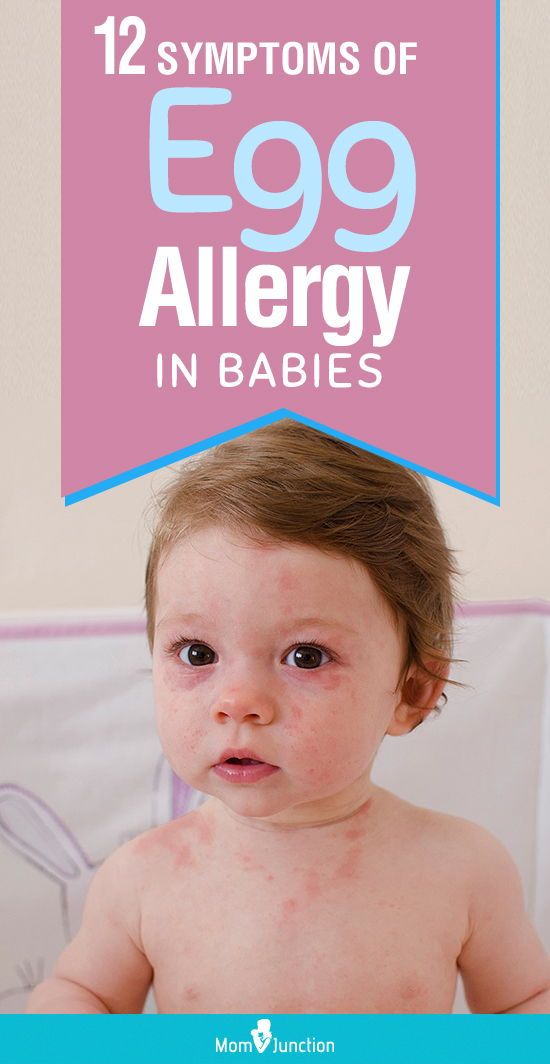
Lots of children outgrow their allergies to milk or eggs, but a peanut allergy is generally lifelong.
If your child has a food allergy, read food labels carefully. Avoid foods if you’re not sure whether they contain the food your child is allergic to.
How to tell if your child has a food allergy
Allergic reactions usually happen quickly within a few minutes of exposure to an allergen.
They can cause:
- sneezing
- a runny or blocked nose
- red, itchy, watery eyes
- wheezing and coughing
- a red, itchy rash
- worsening of asthma or eczema symptoms
Most allergic reactions are mild, but occasionally a severe reaction called anaphylaxis or anaphylactic shock can occur.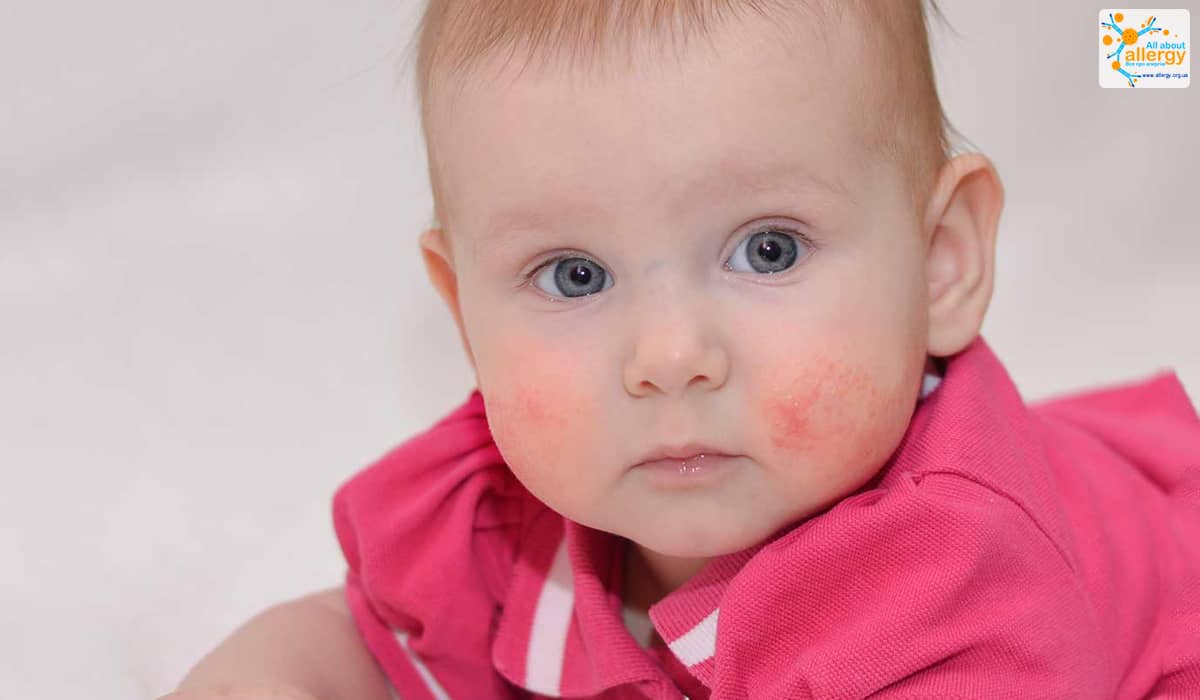
This is a medical emergency and needs urgent treatment.
Do not be tempted to experiment by cutting out a major food, such as milk, because this could lead to your child not getting the nutrients they need.
Talk to your health visitor or GP, who may refer you to a registered dietitian.
Food additives and children
Food contains additives for many reasons, such as to preserve it, to help make it safe to eat for longer, and to give colour or texture.
All food additives go through strict safety testing before they can be used. Food labelling must clearly show additives in the list of ingredients, including their name or “E” number and their function, such as “colour” or “preservative”.
A few people have adverse reactions to some food additives, like sulphites, but reactions to ordinary foods, such as milk or soya, are much more common.
Further information
Find out more about:
- Foods to avoid giving babies and young children
- Food intolerance explained
- Food colours and hyperactivity
Page last reviewed: 5 November 2021
Next review due: 5 November 2024
Allergies in Babies & Toddlers: Types, Diagnosis, Treatment
Written by Kelli Miller
- Food Allergies
- Seasonal Allergies
- Indoor Allergies
- Pet Allergies
- Diagnosing Allergies in Babies and Toddlers
- Treating Allergies in Babies and Toddlers
- More
Your infant has a rash, and their skin is not so baby soft. Or maybe your little one sniffles and sneezes often. Symptoms like these could be signs of an allergy.
Cow’s milk, dust mites, even the family pet can make the tiniest humans have an allergic reaction. If this happens, there are things you can do to help your child.
If this happens, there are things you can do to help your child.
About 6 million kids have a food allergy. It happens more often in boys than girls. Your baby or toddler can be allergic to any food and may react to more than one.
Peanuts are the leading trigger of food allergies in children. Other common ones are:
- Cow’s milk
- Eggs
- Fish
- Nuts from trees (like almonds, cashews, and walnuts)
- Shellfish (like crab, lobster, and shrimp)
- Soy
- Wheat
The most common symptoms of a food allergy in babies and toddlers are:
- Belly pain
- Coughing
- Diarrhea
- Fainting
- Hives or rash
- Nausea or vomiting
- Red rash around the mouth
- Runny or stuffy nose
- Swelling of the face, legs, or arms
- Tightness in the throat
- Trouble breathing, including wheezing
Food allergies can cause sudden and serious life-threatening symptoms. For example, your child might have extreme trouble breathing and a sharp drop in blood pressure that can cause shock. Signs of shock include pale, clammy skin and dizziness. This type of reaction is called anaphylaxis. You should get medical care right away if you notice any of those signs.
Signs of shock include pale, clammy skin and dizziness. This type of reaction is called anaphylaxis. You should get medical care right away if you notice any of those signs.
Your child’s doctor probably will give you something called an EpiPen that you can use to give them a shot of epinephrine (adrenaline) in case of an emergency. Use it at the first sign of symptoms.
There’s no cure for food allergies. But new studies have found that in the case of peanuts, it might be possible to prevent a severe allergy from developing by introducing them to high risk infants as early as 4 to 6 months. Other studies have also shown that peanut immunotherapy drops administered under the tongue are safe and effective as treatment for peanut allergy, even in children as young as 1. It also was shown to help significantly desensitize them to the allergy.
Some research has shown that introduction to multiple allergens together such as nuts, eggs, and fish, may help the immune system against the development of allergies but more studies are needed. The American Academy of Pediatrics is encouraging the introduction of allergenic foods under doctor’s supervision.
The American Academy of Pediatrics is encouraging the introduction of allergenic foods under doctor’s supervision.
Still, as a rule, if your child is diagnosed with a food allergy, they must stay away from the problem food, even in tiny amounts. Be sure to check all food labels for hidden ingredients, like peanut oil, and take care when ordering meals at restaurants.
Some children outgrow a food allergy. but for others, the allergy may last their entire life.
Sometimes, breastfeeding infants get fussy after mom eats certain spicy or gassy foods like cabbage. Doctors don’t call this a true allergy because it doesn’t cause typical allergy symptoms, like hives or a rash – the most common symptoms of a food allergy. If your child fusses or cries every time you eat a certain food, call your pediatrician. It could be a sign of colic instead.
If your family has a history of food allergies, pediatricians recommend that you:, give your baby only breast milk until they are 6 months old. It can make them less likely to have food allergies.
It can make them less likely to have food allergies.
But breastfeeding moms shouldn’t stress too much about their diet. There’s no proof that staying away from certain foods during breastfeeding can keep your baby from developing allergies or asthma. And kids with food allergies are 2 to 4 times more likely to have asthma and other allergies.
If your little one’s symptoms get worse during certain seasons, it may be hay fever, also called allergic rhinitis. This common allergy in kids causes sneezing, sniffling, and other symptoms when some trees, grasses, and weeds are in bloom. Pollen from trees and plants are among the most common allergy triggers in children.
The symptoms are the same ones adults have:
- Runny, itchy nose
- Watery eyes
- Sneezing
- Stuffy nose
Your baby or toddler also may have ear pain. Both seasonal and indoor allergies can lead to chronic ear infections.
Your little one’s favorite stuffed animal could be an allergy trigger. Little specks of dust, called dust mites, make indoor allergies worse. And these mites collect in soft, cozy places like plush toys and pillows. Mold, cigarette smoke, and perfume also can trigger indoor allergies in kids.
Little specks of dust, called dust mites, make indoor allergies worse. And these mites collect in soft, cozy places like plush toys and pillows. Mold, cigarette smoke, and perfume also can trigger indoor allergies in kids.
About 1 in every 6 kids has an indoor allergy. Symptoms are the same as seasonal allergies and include a runny, stuffy nose and sneezing.
You can help your little one feel better by doing these things:
- Change air duct filters once a month.
- Avoid wall-to-wall carpeting. It can collect dust.
- Sweep and vacuum regularly.
- Use allergen-proof zip-up covers for mattresses, box springs, and pillows.
- Wash linens every 2 to 3 weeks in hot water and dry them in a hot dryer.
- Place soft toys in a plastic, sealable bag and put it in the freezer for at least 5 hours once a week. This kills dust mites.
- Don’t use humidifiers and vaporizers. They add moisture to the air and increase the risk of mold and dust mites.
The family dog may be a cuddly source of comfort for your toddler.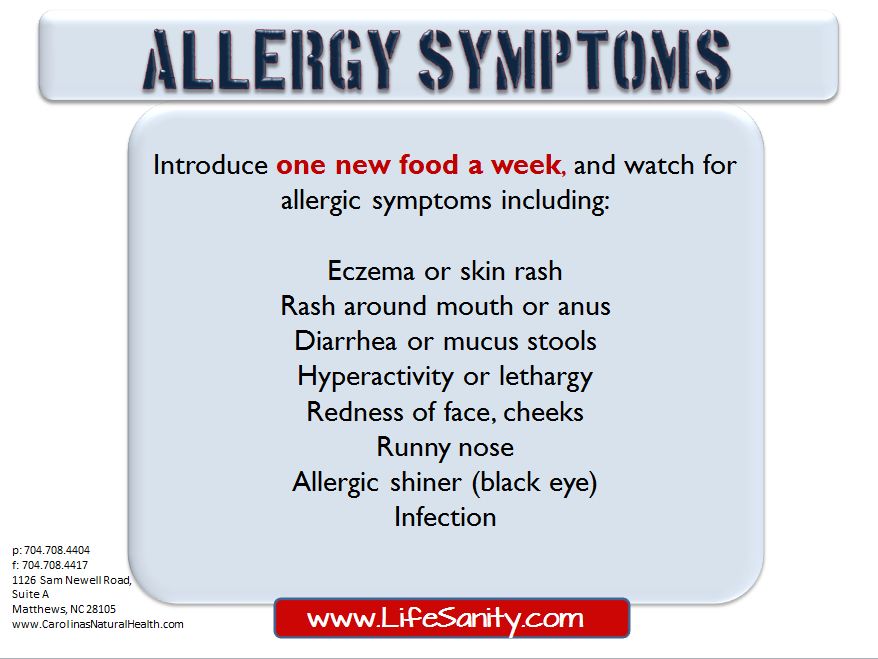 But pets can make some kids (and adults) sniffle and sneeze.
But pets can make some kids (and adults) sniffle and sneeze.
Pet allergies are a kind of indoor allergy. Cats are the culprit most of the time, but dogs can cause allergy problems, too. If your child seems allergic to your dog or cat, try an allergy-friendly pet, like a fish.
Keep a diary of your little one’s symptoms — what they are and when they happen — to help the doctor figure out what kind of allergy your child has and how to treat it.
You may need to take them to an allergist (a doctor that specializes in allergies). They’ll ask about symptoms and personal and family health history. Be sure to tell them when symptoms happen, like after meals or during specific seasons.
Your child’s treatment may depend on the type of allergy they have. In general, the doctor may recommend the following to help with symptoms:
- Pills or liquids called antihistamines to ease skin rashes or a runny nose
- Inhalers to use when your child has trouble breathing
- An EpiPen for emergency treatment of a life-threatening reaction
- Administering peanut immunotherapy drops under the tongue
Top Picks
Prevention of food allergies in children
And in the first year of a child’s life, food allergies are the most common.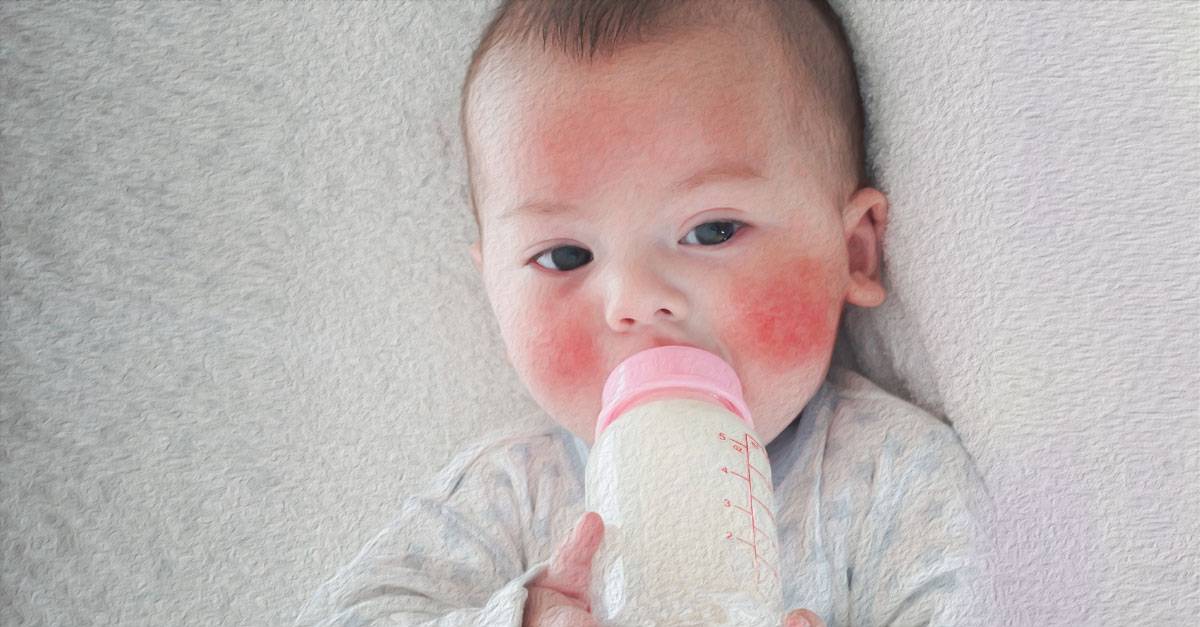
The leading risk factor for the development of allergies in a child is the presence of a burdened heredity in the family. If this is one of the parents, then the chances of getting sick and staying healthy in a child are approximately 50 x 50. At the same time, the likelihood of developing an allergy in a baby is much higher if female relatives are susceptible to it. If both mom and dad suffer from allergies, then the probability of an allergic reaction is already 75%.
A very important risk factor for the development of allergies is also the nutrition of the expectant mother during pregnancy . Excessive enthusiasm for allergenic products (for example, milk and dairy products), even if the mother herself is not allergic to them, can provoke the development of the disease in the baby both immediately after birth and also in the prenatal period.
Manifestations of allergies in young children
The main manifestations of allergies in children of the first year of life are dermatitis ( itching, redness, peeling, rash, scratching, dryness or weeping of the skin) and dyspepsia regurgitation, vomiting, loose stools or constipation, increased gas formation, abdominal pain.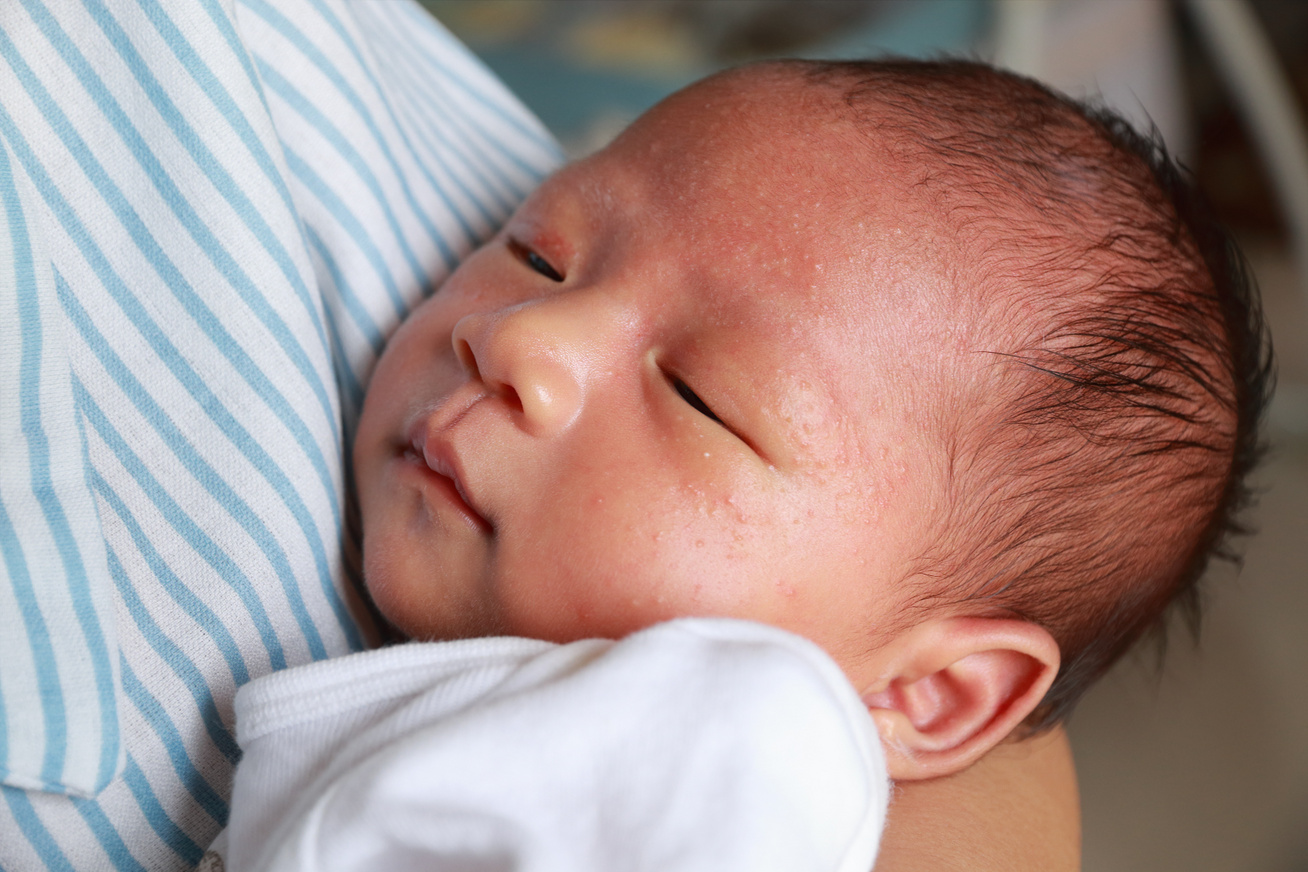 The baby becomes restless, naughty, often cries, as it seems, for no reason, eats and sleeps poorly. Very rarely, there may be a cough, the appearance of elements of urticaria on the skin, Quincke’s edema – swelling of the eyelids, lips or the entire face, larynx. All these violations most often occur within 24-48 hours after the use of an allergenic product. But often the allergy “accumulates” in the child’s body, while he eats food that is not suitable for him day after day. In this case, the disease is delayed and manifests itself within 5-7 days, gradually increasing.
The baby becomes restless, naughty, often cries, as it seems, for no reason, eats and sleeps poorly. Very rarely, there may be a cough, the appearance of elements of urticaria on the skin, Quincke’s edema – swelling of the eyelids, lips or the entire face, larynx. All these violations most often occur within 24-48 hours after the use of an allergenic product. But often the allergy “accumulates” in the child’s body, while he eats food that is not suitable for him day after day. In this case, the disease is delayed and manifests itself within 5-7 days, gradually increasing.
Allergenic products
For children in the first six months of life who are on artificial and mixed feeding, allergens can be cow and goat milk proteins, soy protein (that is, adapted mixtures made on their basis).
Babies who are receiving complementary foods and older children may be allergic to more than obligate allergens ( citrus fruits, strawberries, strawberries, chicken eggs, fish, seafood and caviar, nuts, honey and other bee products, some spices, chocolate), but also quite ordinary products (chicken, veal, beef, wheat and rye flour, vegetables, buckwheat, etc. that do not cause hypersensitivity in other children. Currently, food colorings and flavor enhancers are becoming significant allergens , which are added in the industrial production of food and sweets
that do not cause hypersensitivity in other children. Currently, food colorings and flavor enhancers are becoming significant allergens , which are added in the industrial production of food and sweets
Food allergy: treatment or prevention?
Allergy is a chronic disease. Of course, allergies, like any other disease, can be treated . At the same time, it is impossible to completely cure allergies, but long-term remission can be achieved. Treatment is prescribed only by a doctor and includes the identification and removal of the causative allergen, diet, the use of antiallergic drugs, active external therapy using various ointments and creams.
The best thing to do, however, is to try to prevent your baby from developing food allergies. And you need to start prophylaxis more before pregnancy , having been examined by an allergist at the slightest suspicion of an allergy. Perhaps the expectant mother will need to take special medications that will prepare her immunity for the birth of a baby. During the period of expectation of the child , it is necessary to avoid not only foods that are unsuitable for the mother, but also to limit any allergenic foods. Today, these include not only traditional citrus fruits and strawberries, but also dairy products, gluten, eggs, fish, soy
During the period of expectation of the child , it is necessary to avoid not only foods that are unsuitable for the mother, but also to limit any allergenic foods. Today, these include not only traditional citrus fruits and strawberries, but also dairy products, gluten, eggs, fish, soy
Nutrition for mother and baby
After the birth of the baby the prevention of food allergies consists of several components
Breastfeeding is very important 9000 5 nutrition of a nursing mother. She should continue to follow the diet and avoid the allergenic foods mentioned above in her diet.
If the child is on artificial or mixed feeding, the following factors must be taken into account when selecting a mixture:
– The bulk of the mixtures are prepared on the basis of whole cow’s milk, therefore, in fact, they are obviously ALLERGENIC
– Children at risk for the development of food allergies are prescribed preventive and even therapeutic mixtures in which whole cow protein is subject to partial or complete hydrolysis
– Cow and goat milk proteins are cross-allergic.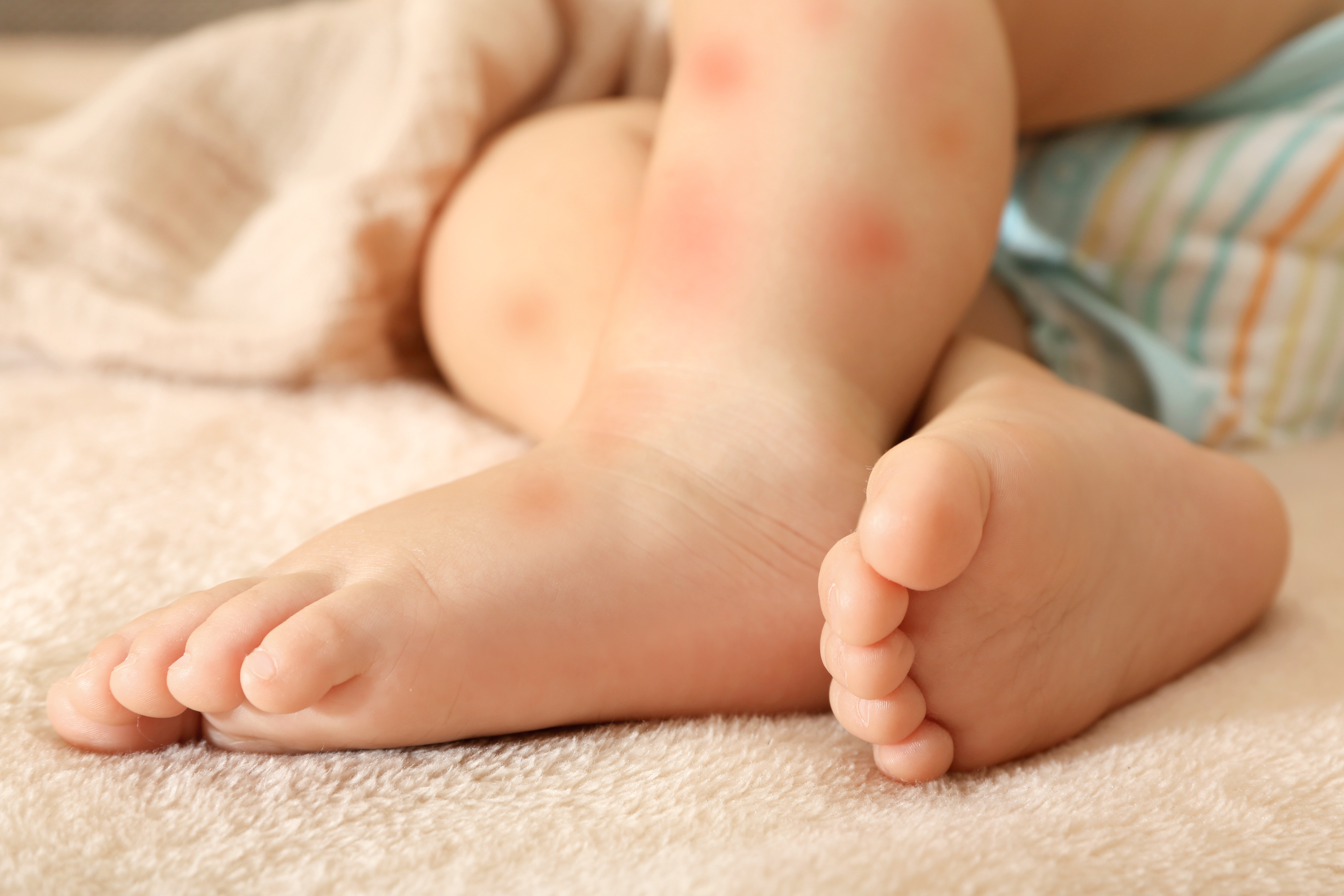 Therefore, mixtures based on goat’s milk are NOT INTENDED for therapeutic nutrition of children with food allergies.
Therefore, mixtures based on goat’s milk are NOT INTENDED for therapeutic nutrition of children with food allergies.
A pediatrician, an allergist-immunologist will help you choose the right breast milk substitute suitable for a particular child. The sooner competent diet therapy is started, the sooner remission will come
You need to be very careful with the introduction of complementary foods .
For breast-fed babies, the introduction of new products is recommended after 6 months, and for formula-fed babies – from 4 months of age
It is better to start complementary foods with one-component vegetable purees. Each new product must be introduced gradually without mixing with others, starting with half a teaspoon, bringing to the required amount within a week. This should be done only if the child is absolutely healthy , choosing at the first stage food with a low degree of allergenicity (for example, zucchini, cauliflower, green apple, green pear, plum, rice, corn, turkey, pork, rabbit). In any case, the selection of an individual diet for a baby with a food allergy should be carried out by a pediatrician,
In any case, the selection of an individual diet for a baby with a food allergy should be carried out by a pediatrician,
The development of a food allergy in a child largely depends on the parents. The sooner you start its prevention, the less the risk of unwanted reactions in the baby to various products. So, when the baby grows up, his diet will be richer and more varied.
We are waiting for you to consult an experienced doctor of an allergist-immunologist in the Clinic “Mother and Child” South-West
Treatment of Allergies in Perm, Symptoms and Treatment of Allergies, what to do with allergies in children?
Allergy in a child, symptoms and treatment of allergies, what to do
Reading time:
11 minutes
No time to read?
The most common types of allergies in children
Allergy in a child is one of the most common complaints when contacting an allergist-immunologist. Children of preschool age are most susceptible to this disease due to an underdeveloped immune system.
Children of preschool age are most susceptible to this disease due to an underdeveloped immune system.
1. Respiratory tract allergy is the main cause of adenoid hypertrophy (growth), year-round allergic rhinitis, bronchial asthma. In this case, an otorhinolaryngologist and an allergist-immunologist are complexly involved in the treatment of a child.
2. Among the types of food allergies in children, the most typical are:
– allergy to milk
– allergy to egg white
– allergy to honey
– allergy to fish and seafood
– allergy for fruits and vegetables
Food allergies most often manifest themselves as skin reactions.
3. Skin allergy in a child is manifested by red spots, swelling, itching, rash. In addition to the local ones, general reactions can also join: chills, fever, dizziness, vomiting, nausea, burning in the mouth, nose.
Among the possible diseases in this case:
– allergic urticaria – atopic dermatitis – eczema – contact dermatitis
Main causes of allergies in children
House dust mites
Mold
Animal hair
Insect bites
Pollen
Allergy in a child – what to do?
First aid for a child is to urgently stop contact with the allergen and eliminate the allergic substance. If you are allergic to dust or odor, you need to provide fresh air. If the baby’s condition is severe (rapidly increasing edema, difficulty breathing and / or swallowing), he should be urgently transported to a medical facility.
If you are allergic to dust or odor, you need to provide fresh air. If the baby’s condition is severe (rapidly increasing edema, difficulty breathing and / or swallowing), he should be urgently transported to a medical facility.
The most effective way to treat allergies is to avoid exposure to the allergen. It is important to know what exactly provoked the pathological immune response. It is very expensive and uninformative to take tests for all allergens, so at first the doctor interviews the patient in detail and draws up a list of possible allergens.
Contacting the Cough and Allergy Clinic
For the treatment of allergies in children, the allergist-immunologist of the Cough and Allergy Clinic first of all prescribes the drugs necessary to relieve the severity of the allergic reaction in the child. When the cause of the allergy is not clear, tests are performed to identify the allergen. The patient’s blood is examined for exposure to a mixture of different allergens. Based on the study, the patient is prescribed a course of treatment. In addition to blood tests for allergies, skin prick tests (so-called “scratches”) may be prescribed to the patient. The choice of a specific diagnostic method is determined by a pediatric allergist-immunologist.
Based on the study, the patient is prescribed a course of treatment. In addition to blood tests for allergies, skin prick tests (so-called “scratches”) may be prescribed to the patient. The choice of a specific diagnostic method is determined by a pediatric allergist-immunologist.
Food allergens Panel of 19 food allergens
- Cow milk, egg
- Lemon, mandarin, orange
- Chicken, duck, pork, beef
- Oatmeal, wheat, rye, rice, buckwheat
- Hake, cod
More details
Pollen allergens Panel of 15 pollen allergens
- Wormwood, wheatgrass, dandelion
- Fescue, urchin, ryegrass
- Maple, quinoa, birch, oak
- Sunflower, corn, poplar
- Timofeevka, ambrosia
More details
Household allergens Panel of 12 household allergens
- Household, library dust
- Pillow feather, human hair
- Horse dander mite
- Dermatophgoides pteronyssinus
- Wool of cat, dog, rabbit, guinea pig, sheep
- Daphnia
More
Based on the results of the examination, the most effective and appropriate course of treatment is selected for this child. If necessary, a course of immunocorrection can be prescribed.
If necessary, a course of immunocorrection can be prescribed.
Treatment of ASIT
The Cough and Allergy Clinic widely uses allergen-specific immunotherapy (ASIT) for the treatment of pollen allergy (hay fever), allergic rhinitis, bronchial asthma and atopic dermatitis. Treatment consists of introducing gradually increasing doses of the allergen into the body. The method leads to a decrease in sensitivity to the allergen and a decrease or disappearance of symptoms. Today, ASIT is the only method of treating allergies that eliminates both the signs and the cause of the disease – an inadequate response of the immune system to the external environment. Read more about ASIT treatment here.
Why is it important to consult an allergist-immunologist and not to self-medicate?
The most important thing in the treatment of allergies in children is to correctly differentiate a viral disease from an allergic reaction and, in accordance with this, to choose the right treatment.
